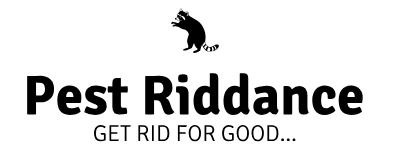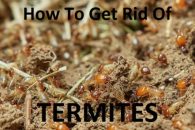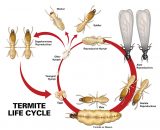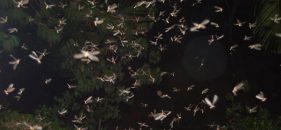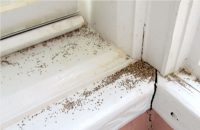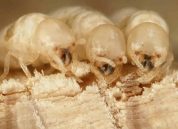The termite (also mistakenly called white ants) is a member of the order Isoptera, a Latin term that
refers to the fact that adult termites have a pair of wings of equal size.
They belong to the superorder Dictyoptera. They are related to cockroaches.
Some authors liken them to the order of Blattodea.
Indeed, the most recent phylogenetic analyses show that termites form a monophyletic group of Blotoptera and that their sister group corresponds to the sub-social xylophagous cockroaches (which feed on wood) of the genus Cryptocercus (family Cryptocercidae).
Despite the strong similarity with the eusocial Hymenoptera (ants, some wasps, and bees), termites have a diplo-diploid reproductive system and both sexes coexist within each caste.
Unlike Hymenoptera which are Holometabolous (undergoes complete metamorphosis), termites are
heterometabolic insects or even paurometabolous insects.
They are a group of eusocial insects that eat wood and other materials rich in cellulose.
Most termites are from tropical or subtropical climates, but a few live in temperate climates.
Termites by themselves are not capable of digesting cellulose, but can take advantage of their nutrients
thanks to the degradation of cellulose by protozoa that live in symbiosis within the digestive system of
the workers.
The other castes receive the already digested food that the workers regurgitate in their mouths.
Termites are economically important as a pest in wooden structures, works of art and stored products.
Contents
Geographical distribution and ecology
Termites are abundant and diverse in South America, Africa, and Australia, particularly in tropical
lowland and savanna forests.
Up to now, at least 400 species have been known, six of which have been introduced from other regions as urban pests.
The most common species in America are those that build mounds and tree species.
Some of the commonly known are termites of the genus Reticulitermes Holmgren (1913) which belong
to the family Rhinotermitidae.
Diversification of this genus is estimated at about 38 million years, when most species originated in the North American continent.
To date, there are about 138 species mostly distributed in the temperate regions of the globe, mainly in
the Northern Hemisphere.
All species of this genus are called “underground” they feed on dead wood and build their nests in the
ground or in the wood.
In nature, underground termites thus play an important ecological role in the decomposition of organic matter and aeration of soils.
These lucifuge termites (which fly away from light) build true networks of subterranean and aerial galleries (hence their name) protecting them from desiccation and allowing them to reach new sources of food.
During the exploration phase, only a few workers explore new territories in all directions and once food is detected by the volatile molecules it emits, foragers make longer and more frequent explorations into the food source and recruit other workers for the exploitation of this resource.
However, in urban areas, Reticuliterms can be very destructive for wood-containing infrastructure.
Geographical distribution of R. flavipes
The yellow-legged termite, Reticulitermes flavipes (Kollar) is a species native to the United States of
America.
Its range covers much of the eastern and southeastern United States.
Although other native subterranean termites live sympatrically (in the same areas) with the species: R. virginicus, R. hageni, R.hesperus, R. malletei, R. tibialis, and R. nelsonae, R. flavipes is one of the most species causing the most
damage in the United States.
This species is highly invasive and has been introduced in many parts of the world.
In the United States, it has been introduced in states other than those in the East, such as California or Nebraska, as well as in other countries in North America (Canada and Bahamas) and South America (Chile and Uruguay).
In Europe, it is widespread in France and was occasionally found in Germany (Hamburg), Italy (Varese)
and Austria (Vienna), where it was first described by Kollar.
In France, although this species was long considered European and called R. santonensis, or termite of Saintonge, several contemporary studies agreed that this “species” was actually an introduced population of R. flavipes from the United States.
An analysis of more than 200 samples collected in the United States and France revealed the genetic
affiliation of the French population to the American species R. flavipes.
This study also revealed that all the French infestations sampled originate from an American source population of the state of Louisiana and more precisely of the New Orleans city area.
How many termite species are there?
Termites consist of eight families, including the Rhinotermitidae and Termitidae which are the most
apical lineages in the phylogenetic tree, which have the largest number of species.
There are about 1,900 species of termites.
They live in colonies that can have more than two million individuals.
In each colony, the queen is the only one that lays eggs.
Most of these insects lack wings but during the breeding season, some develop these organs and leave the group to form their own colonies.
Some varieties of termites are:
- Termite of the African savanna – Macrotermes natalensis
- Compass Termite – Amitermes meridionalis
- Tree Termite – Nasutiternes
The social organization of termites
A colony of termites consists of three basic castes: workers, soldiers, and reproductives.
1. Workers
They are apterae, sexually immature and, with the exception of the family Hodotermitidae, they are
blind.
Its body is generally little sclerotized.
This breed plays an important role in the colonies, since it is the one that develops most of the work in the nest, among which we can mention:
- The construction and maintenance of the nest
- The care and feeding of juveniles
- Feeding the breeds that cannot feed themselves such as the soldiers and the royal couple
- Elaboration of tunnels for the search of food
- Grooming and cleaning of other breeds
2. Soldiers
They are sterile and of both sexes.
They are easily recognized as having a large and well-sclerotized head, which sometimes becomes larger than the rest of the body.
Many have very developed jaws to bite the enemy; others are more specialized and have a pointy face
associated with glands, so that they can repel other animals with jets of this secretion.
The secretions can be of different types, although the most normal thing is that they are toxic.
Its role is the defense of termite colonies.
3. Winged termites
The winged ones are imagos that still maintain their wings.
They are those that can produce new queens and kings.
Known as swarmers, the winged ones lose the wings immediately or following contact with the opposite sex.
4. Primary reproductives
The primary reproducers are called King and Queen.
Their bodies are normally well sclerotized, except for the female of some species, whose abdomen can become enormous due to the hypertrophy of their ovaries.
5. Supplementary reproductives
In the case that the queen dies or is very old and her egg production decreases, substitute queens can
be produced.
These secondary breeders replace or supplement primary breeders and have philopatric reproduction.
They have their bodies normally less sclerotized than the primary ones.
6. Neotenics
The neotenics are of two types: the neotenic brachypterous (or nymphoid), derived from the
differentiation of nymphs, and the wingless neotenics (or ergatoids) resulting from the differentiation of
workers.
These have never been observed in nature, but are regularly observed in isolated colonies in
the laboratory.
Dispersion and foundation of new colonies
The existence of the two types of reproducers (primary and secondary) is associated with two modes of
colonial foundation possible in Reticulitermes:
- Swarming
- Cuttings
Swarming is the classic mode of dispersal present in all termite species.
During the swarming, males and females go in search of a partner to found a new colony.
Most often, theft is used primarily to remove individuals from the colony from which they are derived, thereby avoiding inbreeding pairings.
The mating flight usually does not exceed one hundred meters and therefore corresponds to the scattering
distance by swarming.
Once on the ground, males actively search for a female.
However, the pairing between individuals does not seem to take into account the relationship between individuals and occurs randomly.
The partners stay as a monogamous couple, copulate and go together in search of a favorable site to found a new
colony.
Cuttings are a priori less common in termites, and although it has never been formally demonstrated in
nature, it has been regularly suspected in many studies of Reticulitermes populations.
This mode of dispersion is assured via the differentiation of secondary breeders.
Indeed, when colonies have abundant food resources in and near the nests, the presence of neotenics allows the exploitation of this resource to increase.
The presence of female neotenics tends to increase the productivity of the colony.
However, workers and nymphs tend to look for new food sources around their nest of a whole network
of galleries, and some of these individuals may differentiate into neotenic breeders, creating a network
of satellite nests.
By this phenomenon, the termite colonies can spread from one colony of close relatives to another, and
this sometimes covers several hundred meters, and in some cases up to a kilometer.
In such situations, it may happen that a satellite nest becomes isolated from other nests and forms a new colonial entity independent of the parental colony.
This mode of foundation can take place over short distances, but also, with the help of man, over long
distances.
Several studies have revealed that only a few individuals (about fifty workers or nymphs) are sufficient
to found a new colony via neotenic differentiation.
By accident, humans can contribute to the long-distance dispersal of these species.
Cuttings have been proposed as a likely mode of dispersal in urban areas.
Population structures of termites
The social organization of termite colonies can take different forms depending on the number, type
(primary or secondary), sex ratio and kinship relationships among breeding stock.
Thus, three major types of families have been defined in subterranean termites.
1. The simple family is the family structure most commonly found in subterranean termites. It is
composed by the monogamous primary couple, the king and queen (usually unrelated), and their
sterile descendants. Thus, genetic analysis of a single family never reveals more than 4 alleles at
each of the loci studied.
2. The extended family is a family structure which, as a replacement or supplement to the two primary
reproducers, is the result of inbred reproduction of neotenic secondary breeders. As in simple
families, a maximum of 4 alleles are observed at all the loci considered, which represents the
maximum of alleles that can be carried by the two primary breeders at the origin of the colony. On
the other hand, the distribution of genotypes in the offspring of an extended family does not
conform to a Mendelian distribution. Indeed, with the inbreeding of neotenics, it is expected that
the degree of kinship between descendants is greater than in a single family. In the majority of
cases, however, we do not have access to breeding stock, so it cannot be ruled out that only
neotenics remain in the colony and reproduce among themselves.
3. The mixed family is a family structure resulting from the reproduction of more than two unrelated
breeders. In termites, this family structure can be obtained in several ways:
a. By adopting new breeders in a mature colony
b. By pleometriosis, which is the foundation of a colony by more than two unrelated
breeders (polygamy), most commonly one male and two females
c. By the fusion of two colonies. In Reticulitermes, only colonial fusion was observed to form
a mixed family. Within these colonies, primary and/or secondary reproducers from the
two unrelated colonies can reproduce together. This family type can be easily identified
with the use of genetic markers when at least one locus has a minimum of 5 different
alleles. However, the detection of these mixed families remains dependent on the level of
polymorphism of the loci used in the study population.
Characteristics of termites nests
Another characteristic of all the eusocial insects are the nests.
Within the termites, these are distinguishable by their great diversity. Sometimes, they present a complex architecture, being able to reach formidable sizes (more than 1000 m³ in some Macrotermes).
The primitive habitat of the termites was probably inside dead woods such as trunks or dead parts of
living trees; where the society establishes both food and shelter.
Within the group of separated nests, three main categories are distinguished:
1. Underground nests which are completely below ground level
2. Epigeous nests which protrude from the surface of the ground (mounds)
3. Tree nests which are built on trunks or on a branch of a tree, which are always attached to the
ground by covered galleries.
However, there are some intermediate nests.
The epigeous nests always have an underground basal part, more or less important but sometimes preponderant as in Hodotermitidae.
Some epigeal nests are built against a trunk of a tree and if the base is reduced, it tends to become arboreal.
What are the economic impacts of termites?
The subterranean termite group (Rhinotermitidae) is one of the termite groups with the highest
number of invasive species, including species of the genera Coptotermes and Reticulitermes.
These species alone are responsible for 80% of termite damage worldwide.
Because of their ecology (ie, underground life and xylophagous nutrition), these species regularly infest
human infrastructure.
In the United States, among other things, the fight against termites and the damage they cause costs billions of dollars each year (estimate of 32 billion dollars in 2010).
